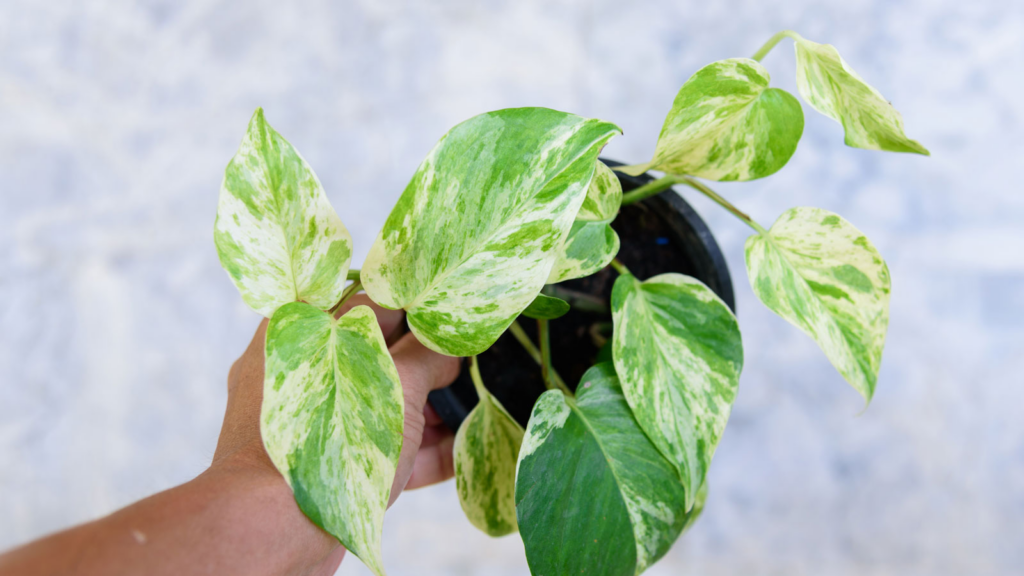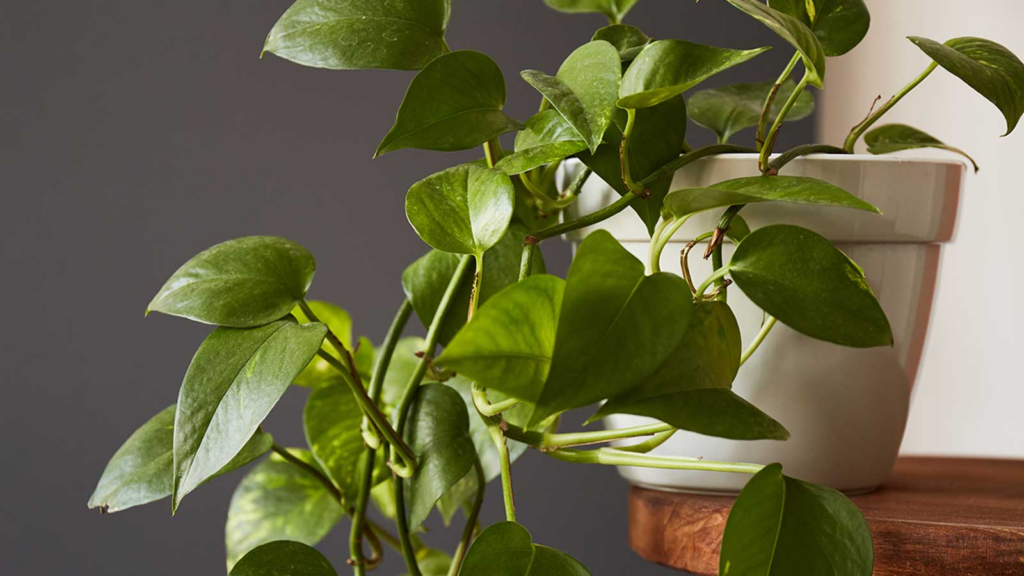What is the Best Temperature for Pothos? How to Maintain Ideal Temperature for Pothos?
Indoor plants are huge these days. People are becoming more and more interested in knowing and using the beauty, health, and purification benefits of having indoor plants. However not many know under what temperature conditions to keep these plants to increase their aesthetics even more. Hey folks! I am Anna Scott, a Gardener with 15 years of gardening experience, now I am here to help other gardeners as well.
One such favored indoor plant is Pothos. Pothos, sometimes referred to as Epipremnum aureum or Devil’s ivy, is a beloved and adaptable houseplant that has won over gardeners all over the world. Do you know what is the best temperature for pothos? It is essential to understand and maintain the proper temperature for your Pothos to ensure their health and optimal growth.
This article will discuss the optimal temperature range for Pothos, symptoms of stress caused by temperature, and helpful hints for setting up the right habitat for these hardy plants. So, let’s get started to know what is the best temperature for pothos.

What is the Best Temperature for Pothos?
Pothos can withstand cold temperatures. However, it will develop most effectively in high temperatures like those seen in its natural habitat. The recommended Pothos temperature range for indoor plants is 70 to 90 degrees Fahrenheit.
This range of temperatures resembles the tropical environment of their natural habitat, enabling them to thrive and show off their distinctive heart-shaped leaves. Pothos can endure up to a certain point both above and below this range.
How to Know if your Pothos are Not of the Perfect Temperature?
Keep an eye out for the following signs if you think the temperature in the room where your Pothos is kept is beyond the preferable range:
Black Leaves
Your Pothos most likely have frostbite if the room it is in is extremely chilly and the leaves have turned black.

Dry Leaf Tips
These hints suggest a low humidity level in the air. However, temperature variations, particularly those caused by heating and air conditioning systems, frequently lead to this issue.
The moisture content of cold air is low. Furthermore, a lot of heating systems make the dry winter air worse.
Twirling Leaves
Curly leaves on Pothos are frequently a sign that the temperature is too high for the plant. The leaves’ long edges will crinkle toward one another. The leaves will appear withered and curling.
Discoloration of the leaves
The majority of robust Pothos plants have green leaves with lovely variegation scattered throughout. Abrupt temperature fluctuations or low temperatures can occasionally cause yellowing on leaves.
Usually, the middle of the leaf will have brown areas due to this deterioration. Often, yellow leaves indicate overwatering
Reduced Growth
If the temperature is not suitable for the Pothos, new growth will become smaller and less frequent. Stunted growth is particularly noticeable along any vines. New foliage will progressively sprout farther apart as the vine becomes larger.
It’s crucial to keep in mind that these symptoms might also be brought on by conditions other than temperature.

How to Maintain Ideal Temperature for Pothos?
Measure the temperature
Taking your temperature should be your first course of action if you experience any of the symptoms listed above. Pothos plants prefer 70 to 90 degrees Fahrenheit of temperature.
It’s a helpful starting point. This is a straightforward problem because of thermostats and thermometers.
As near to the pot as possible, take the temperature reading. Throughout the day, take many readings of the temperature. Additionally, don’t forget to record the temperature at night.
It may seem tiresome to take repeated temperature readings. However, it will assist you in ascertaining whether the temperature maintains a continuous and optimum range. Temperature variations may cause stress to the plant.
You can measure the soil temperature using a soil thermometer. However, compared to outdoor plants rooted directly in the ground, indoor potted plants don’t require this stage as much.
If the room temperature regularly remains in this range, the problem with your plant may not be related to the temperature.
Analyze Plant Positioning
Move the plant if the room’s temperature is nearing the outer bounds of the recommended range. Pothos plants are best suited for bright, indirect light.
You might place the Pothos more into the space or hang a gauzy drape over your window to get this light. Try putting the Pothos in direct sunshine to compensate for the chilly weather.

Nonetheless, you should limit the plant’s exposure to direct sunlight if the room gets hotter. Once the Pothos has adjusted its position, keep a watch on it.
The availability of light affects the Pothos’s temperature. Most significantly, though, photosynthesis requires sunshine. In too low light, the Pothos will not grow.
Additional Modifications
If you saw significant temperature variations, try to determine what caused them. The problem will most likely arise from being close to a heating or cooling system.
One simple technique to change the temperature of plants is to move them away from cooling vents or radiators.
Another cause of temperature swings could be draft doors, windows, or flooring. Seal the source if possible. Move the Pothos away from the draft’s main force if that isn’t feasible.
Of course, you can also use the heating and cooling system in your house to change the temperature. However, this approach isn’t always economical.
Think about relocating your Pothos to a room with more comfortable temperatures during the winter and summer months.
Measure the Humidity
Particularly in the winter, a room’s humidity can occasionally fluctuate in response to temperature changes. Thus, while you modify the temperature, keep in mind to maintain optimal humidity levels.
Pothos, or tropical plants, prefer high humidity levels, usually between 50-70%.
With a hygrometer, measuring humidity is the simplest method. Like temperature measurement, you will gain a better understanding of the plant’s overall experience the more regularly you record the humidity levels.

Modify the humidity
Don’t panic if changing the temperature has made your space less humid. Humidity levels can be surprisingly easily adjusted.
It’s doubtful that the interior of your home has humidity levels too high for Pothos because it’s a tropical plant. Concentrate on raising the humidity.
Use a humidifier to raise the room’s overall humidity level. Consider the humidifier’s distance from the Pothos before positioning it. It shouldn’t be so near that the soil becomes overly wet.
Also, move your Pothos to the kitchen or bathrooms if the light levels allow. Compared to other rooms in the house, these rooms are by nature more humid.
Summing up the context
In this guide, you come to know that Maintaining the ideal temperature for your Pothos is vital for supporting its general health and growth. You can have flourishing and lush Pothos in your indoor area by being aware of the warning symptoms of temperature-related stress and taking actionable steps to maintain the perfect habitat.
The secret to creating a cozy environment for your cherished Pothos plant is regular monitoring, careful positioning, and consideration of seasonal variations. I hope you are clear with this guide. I will come back with another informative guide soon. Till then safe gardening.
Thanks for reading! Happy Gardening!

FAQs
How frequently should I check my Pothos temperature?
Frequent monitoring is advised, particularly in the event of severe weather. Periodically check the temperature, and if your pothos exhibits any indications of stress, think about moving it to a different location.
Can I put pothos outside in the summer?
Yes, pothos can be kept outside in warm weather, but make sure they have shade to prevent overexposure to the sun. Make sure the temperature outside is within the range that the plant can tolerate.
Can pothos inhabit areas with air conditioning?
Pothos can tolerate cool environments, although balance must be maintained. Make sure the temperature doesn’t go too low, and make sure there’s enough humidity to offset the dryness that air-conditioned spaces often bring.
Can I use heating pads or artificial lighting to control the temperature of my Pothos?
In chilly climates, extra warmth can be provided by artificial lighting and heating pads. Make sure, nevertheless, that any additional heat sources are not excessively strong and do not stress or dry out the plant.


